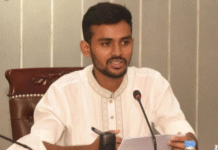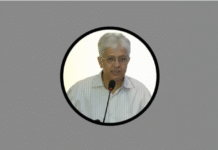Youth unemployment doubles in 7 yrs
 The youth unemployment rate in Bangladesh has almost doubled over the past seven years according to the International Labour Organisation (ILO).
The youth unemployment rate in Bangladesh has almost doubled over the past seven years according to the International Labour Organisation (ILO).
In its ‘Asia-Pacific Employment and Social Outlook 2018’ report released on Friday, ILO pointed out that the jobless rate among the youths (age 15-24) rose to 12.8 per cent in 2017 from 6.32 per cent in 2000.
The survey report has highlighted youth employment, unemployment, the rate of youth not in education, employment or training, formal and informal employment, job satisfaction and more, based on 28 countries from 2010 to 2017.
In Bangladesh, the rate of youth who are not engaged in education, employment or training is 27.4 per cent.
Rizwanul Islam, a former special adviser to the ILO’s employment sector, told Prothom Alo that he would not comment on the ILO report as he was yet to have a look on it.
But he thinks the number of educated jobless youth has increased as per the data of Bangladesh Bureau of Statistics.
“How the growth of gross domestic product (GDP) is contributing to creating additional job sectors is questionable. Again, how the education that youth are receiving is helping them find jobs is not beyond question,” said Rizwanul Islam.
A BBS survey report published in April last shows some 2,677,000 youth were found jobless in 2016-17 fiscal which was 87,000 more than the previous year.
That time, some 40,000 young people who obtained their graduation degree were unemployed while 63,800 jobless youths were HSC passed.
According to the ILO report, the number of jobless youth who have higher education is 10.7 per cent and it is 8 per cent who completed their SSC. But, the rate of unemployed youth who could not complete their primary education was only 1.8 per cent.
Shamsul Alam, a member of General Economic Division of the Planning Commission, told Prothom Alo, “The youth who have completed their higher education don’t think themselves employed unless they get their desired jobs. They don’t consider teaching in coaching centres or freelancing online as their work.”
“Our education system, I think, has to be made market-oriented and we need to turn our manpower as skilled as required in the industrial sector,” he added.
According to the ILO, a person does not remain unemployed if he/she works at least one hour in a week.
The ILO report also reads that the overall employment rate in the country was 3.3 per cent in 2000 and 3.4 per cent in 2010. But it jumped to 4.4 per cent in 2013 and remained the same in 2016 and 2017.
Some 3.3 per cent jobless people are male while 12.8 per cent are female.
As defined by the ILO, people who are out of work, want a job, have actively sought work in the previous four weeks and are available to start work within the next fortnight come under unemployed category.
* This piece, originally published in Prothom Alo print edition, has been rewritten in English by Imam Hossain.









